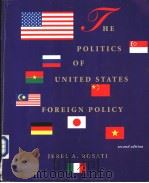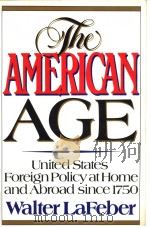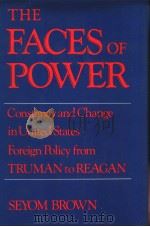《UNITED STATES FOREIGN POLICY CHOICES AND TRADEOFFS》
| 作者 | 编者 |
|---|---|
| 出版 | A DIVISION OF CONGRESSIONAL QUARTERLY INC |
| 参考页数 | 407 |
| 出版时间 | 没有确切时间的资料 目录预览 |
| ISBN号 | 0871874490 — 求助条款 |
| PDF编号 | 811867548(仅供预览,未存储实际文件) |
| 求助格式 | 扫描PDF(若分多册发行,每次仅能受理1册) |

Section One. The Challenges and the Setting1
1. The Foreign Policy Challenge3
The Objectives of Foreign Policy4
The Instruments of Foreign Policy10
Foreign Policy and the Political System20
The Three Dilemmas of Foreign Policy23
2. The International Environment27
The Second World: The Politics of Hostility28
The First World: Friendship and Its Limits40
The Third World: Politics and Equity45
Section Two. The Domestic Politics of Foreign Policy55
3. Direction and Effects of Public Opinion57
Political Animals and Prehistoric Monsters57
Public Opinion on Foreign Policy Issues61
The Public's Impact on Foreign Policy69
4. The Role of Congress79
Constitutional Provisions80
The Era of Acquiescence82
Congressional Resurgence90
Future Directions98
Appendix: Milestones in Congressional Foreign Policy Activism102
5. The Presidency and the Bureaucracy105
The Chief Executive106
The Major Institutions108
Foreign Policy Making in the Executive Branch121
6. Interest Groups131
How Interest Groups Operate133
Business Groups135
The Farm Lobbies139
Organized Labor140
Ethnic Lobbies142
Lobbies for Foreign Governments144
"Public Interest" Groups145
Conclusions147
Section Three. Friends and Adversaries151
7. Sources of Conflict and Cooperation153
Hostility: Initiating Causes154
Hostility: Reinforcing Causes161
The Bases of Friendship166
Interaction and Reciprocity171
8. The Causes of U.S.-Soviet Rivalry177
Initiating Causes179
Reinforcing Causes194
The Outlook199
Appendix: Milestones in U.S.-Soviet Relations201
9. Friendship and Friction in the Western Alliance205
The Foundation of Cooperation205
The Sources of Tension210
The Alliance in Perspective222
10.Interventions in the Third World227
Recent Instances of Intervention227
The Uses and Costs of Military Force233
The Dynamics of Escalating Involvement238
Conclusions248
Appendix: Major U.S. Military Interventions since World War II249
Section Four. War and Peace253
11.Nuclear War: Consequences and Causes255
Physical Effects of Nuclear Weapons256
Effects on the Society and Economy258
Nuclear War by Accident262
The Preemptive Strike266
Escalation from a Conventional War270
Reducing the Risk of Nuclear War276
Conclusions280
12.Weapons and Doctrines283
Trends in Weaponry283
The Strategic Balance286
Strategic Doctrine288
The Search for Strategic Defense303
13.Controlling the Arms Race309
The Arms Control Record310
The Dynamics of the Arms Race317
The Conditions for Arms Control323
Appendix: Principal Arms Control Agreements Signed by the United States328
Section Five. National Prosperity and International Welfare331
14.Economic Relations in the Developed World333
The Advantages of Free Trade334
The Economic Order after World War II336
The Emergence of Neomercantilism339
Neomercantilism and Politics342
Dealing with Neomercantilism346
15.Problems of Third World Development353
The Postwar Years355
"All Good Things Go Together"357
Assertiveness in the Third World359
Dependency Theory361
The NIEO365
U.S. Economic Interests in the Third World368
Section Six. Conclusions373
16.Looking Back and Looking Ahead375
Foreign Policy and Democracy375
Security, Peace, and Military Force379
National and International Prosperity386
The Issue of Human Rights389
Index395
《UNITED STATES FOREIGN POLICY CHOICES AND TRADEOFFS》由于是年代较久的资料都绝版了,几乎不可能购买到实物。如果大家为了学习确实需要,可向博主求助其电子版PDF文件(由 A DIVISION OF CONGRESSIONAL QUARTERLY INC 出版的版本) 。对合法合规的求助,我会当即受理并将下载地址发送给你。
高度相关资料
-
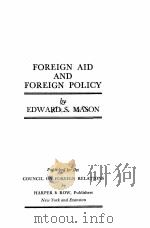
- FOREIGN AID AND FOREIGN POLICY
- 1964 HARPER AND ROW
-

- SOCIAL POLICY IN THE UNITED STATES
- 1995 PRINCETON UNIVERSITY PRESS
-
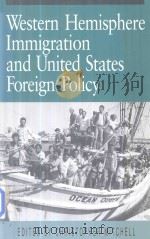
- Western Hemisphere Immigration and United States Foreign Policy
- 1992 The Pennsylvania State University Press
-

- FOREIGN AFFAIRS AND THE UNITED STATES CONSTITUTION SECOND EDITION
- 1996 CLARENDON PRESS . OXFORD
-

- The Politics of United States foreign policy
- 1993 HARCOURT BRACE JOVANOVICH COLLEGE PUBLISHERS
-
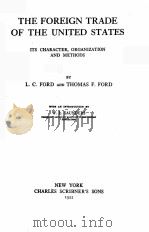
- THE FOREIGN TRADE OF THE UNITED STATES
- 1922 CHARLES SCRIBNER’S SONS
-
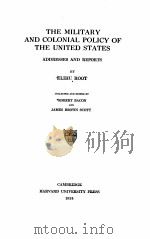
- THE MILITARY AND COLONIAL POLICY OF THE UNITED STATES
- 1924 CAMBEIDGE HARVARD UNIVERSITY PRESS
-
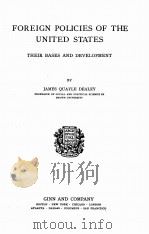
- FOREIGN POLICIES OF THE UNITED STATES
- 1926 GINN AND COMPANY
-
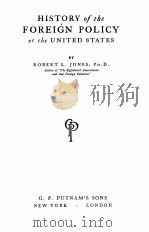
- HISTORY OF THE FOREIGN POLICY OF THE UNITED STATES
- 1933 G.P. PUTNAM’S SONS
-
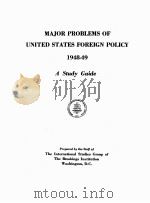
- MAJOR PROBLEMS OF UNITED STATES FOREIGN POLICY 1948-1949
- 1948 THE BROOKINGS INSTITUTION WASHINGTON
提示:百度云已更名为百度网盘(百度盘),天翼云盘、微盘下载地址……暂未提供。➥ PDF文字可复制化或转WORD

